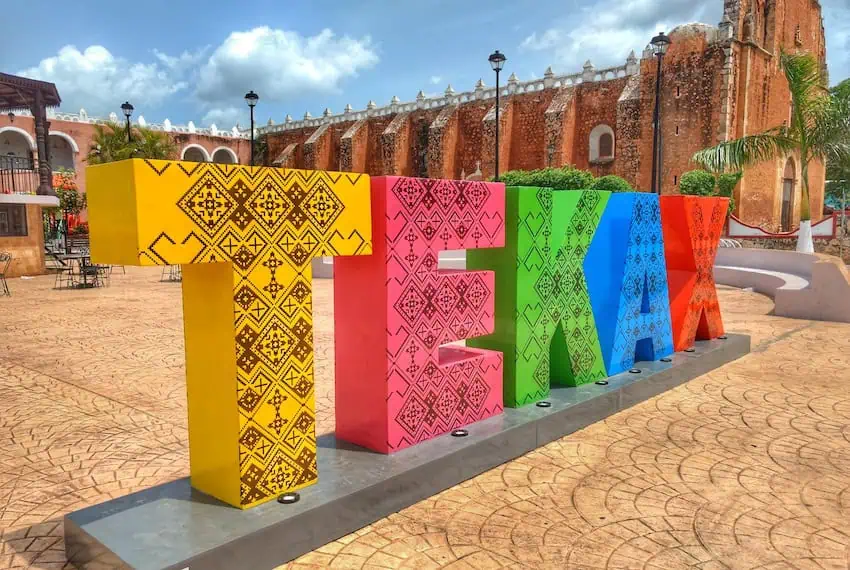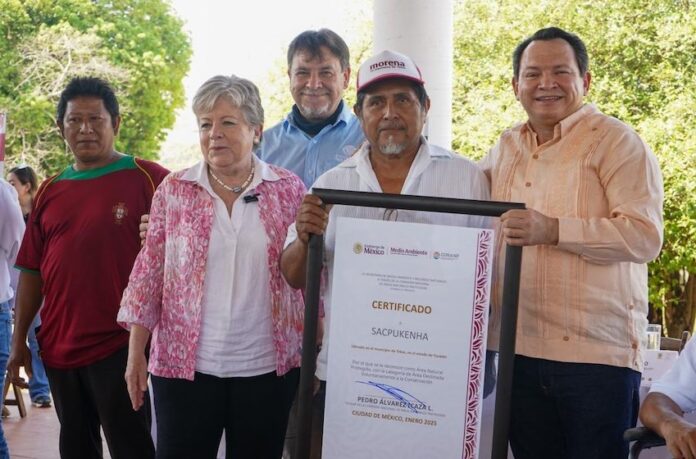Three Maya communities in the state of Yucatán have been added to the list of Protected Natural Areas (ANP) by Mexico’s Environment and Natural Resources Ministry (Semarnat).
The head of the ministry, Alicia Bárcena Ibarra, was joined by Yucatán Governor Joaquín Díaz Mena in presenting certificates to the ejidos (communally owned lands) of Sacpukenhá, Chan Dzitnup and San Agustín, recognizing the efforts of Maya communities who — on their own initiative — have opted to carry out conservation actions in the area.

An ejido is a form of communal land tenure in Mexico, primarily used for agriculture. The three awardees are all located in the municipality of Tekax.
“These areas are a clear example that conservation is not only the government’s responsibility, but a collective effort where Indigenous peoples, social organizations and committed citizens become guardians of our environment,” Bárcena stated during the Monday ceremony in San Agustín.
The certificates were presented within the Puuc State Biocultural Reserve, a unique area that highlights the interplay between the environment and culture in the region. This reserve is the first to receive the “biocultural” designation, emphasizing the influence of natural resources on the worldview, artistic expressions and religious practices of the Maya communities.
According to a press release from October, Mexico has more than 230 federally protected natural areas (ANPs), each managed by the National Commission of Protected Natural Areas (Conanp). Including national parks, biosphere reserves and designated areas that protect flora, fauna and other natural resources, these lands comprise a total of 98 million hectares, roughly the size of the state of Oregon.
Governor Díaz Mena emphasized that the new protected areas are part of Yucatán’s natural heritage and Maya identity, which must be preserved for future generations. The areas also support local economies by promoting sustainable tourism and agriculture, he added.

“Yucatán is a natural heritage that will also be a legacy for your children and grandchildren,” he said.
The Federal Attorney’s Office for Environmental Protection (Profepa) recently closed forestry activities in the Puuc Biocultural Reserve due to illegal land use changes, the agency announced in a March 3 press release.
Profepa inspectors found two sites with unauthorized clearing of natural vegetation and seized heavy machinery used in that activity. The transgressions occurred in the municipality of Tekax.
“The ultimate goal of our procedure is for those responsible to repair the damage,” said Mariana Boy Tamborell, a federal attorney for environmental protection who was also involved in last week’s story about Profepa shutting down dolphin shows at the Hotel Barceló in the Riviera Maya.
“This action underscores the ongoing efforts to balance environmental protection with community needs in the region, ensuring that conservation efforts benefit both the environment and local communities,” Boy added.
With reports from La Jornada and Imagen Radio
